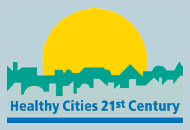Child-Friendly Places
Child-Friendly Places
Place matters for children’s health and well-being. The local neighbourhood is particularly important for young children’s health and well-being, as they spend most of their time in their local neighbourhood. The environment children grown up in also shapes their habits and behaviours, and has an impact on their choices throughout their life. Successful places give children a sense of belonging, a sense of identity and a sense of community. Supportive places enable children to walk or cycle to school, play outdoors, mix with people of different ages and incomes, and observe nature.
Not all children enjoy equal access to a good quality environment. There is a clear link between place, health inequalities and health outcomes. Poor quality surroundings can have a negative impact on children’s health. Place, if properly designed and managed, is an asset which can create the conditions for children’s health to flourish.
Designing Places for Children and Young People – Guidelines for Child Centred Planning, Design and Stewardship for the Built Environment in Northern Ireland
Good and inclusive places not only improve health and wellbeing and boost economic activity but they make our children and young people visible and recognise their role as active participants in the lives of our towns and cities. It is therefore important to design our places in such a way that ensures our built environment takes into account the needs of all people recognising that different age groups may have different requirements. Child’s rights compliant design guidelines can help to create functional and enjoyable places that cater for all people’s needs.
PLACEMAKING ENGAGING CHILDREN & YOUNG PEOPLE: A guideline for planners, policymakers and developers in Northern Ireland
This publication as it outlines both the strategic framework and clear guidelines for engaging children and young people in the shaping of their built environment.
The built environment has an important influence on our whole community’s health and wellbeing but too often we forget the nearly 25% of our population who use our public spaces to play and meet friends as well as participating in leisure and sporting activities.
The key message of this publication is that including children is a necessary part of the placemaking process. Doing so demonstrates that children and young people are not passive recipients of plans and interventions but active participants in the design and development of those plan and spaces.
These guidelines are intended to support all parties working to shape the built environment for improved health and wellbeing, including planners, policymakers and developers, engaging with children and young people. They will also be of interest to other professionals working in the fields of public health, transport and community development.



